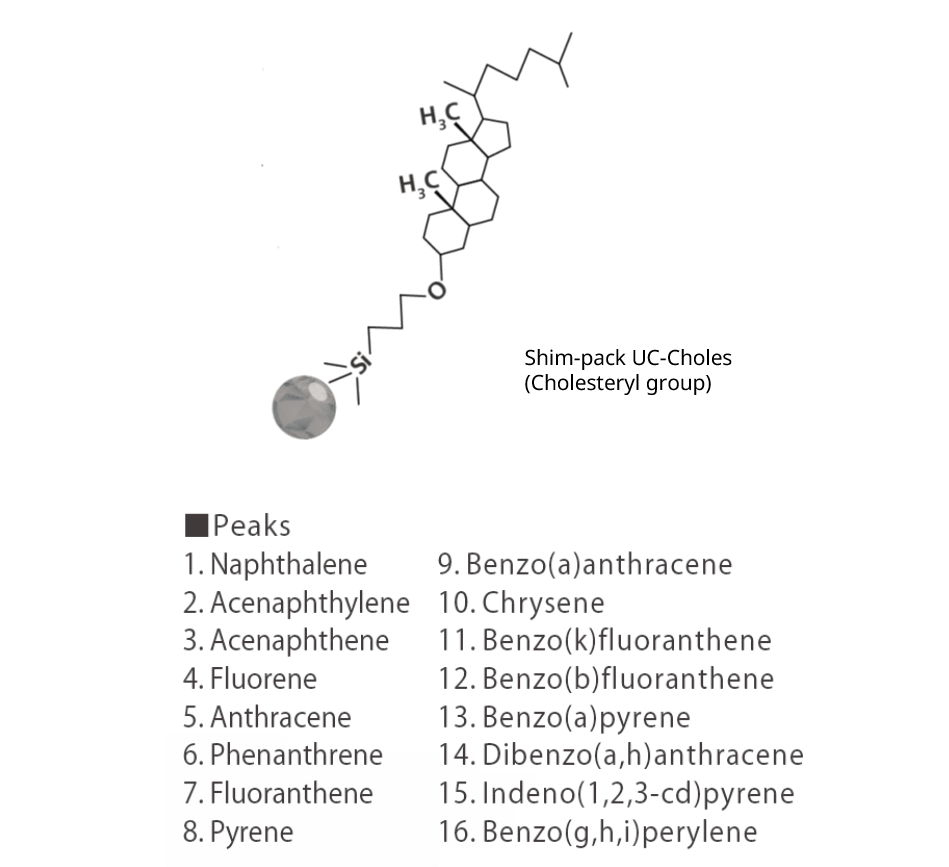Shim-pack UC Series (SFC Columns) - Features
HPLC Column
A wide variety of stationary phases for separating all sorts of compounds
Since the hydrophobicity of supercritical carbon dioxide is similar to hexane, the primary separation behavior of SFC is considered generally similar to the normal phase mode. Depending on the stationary phase selected, other interactions can occur, such as pi-pi interactions or electrostatic reactions similar to HPLC. All 20 column types can be used for compounds with approximately neutral polarity. The figure below shows how retention behavior can vary significantly depending on the type of stationary phase used when analyzing typical acidic, neutral, or basic compounds. Stronger retention can be achieved by selecting a stationary phase expected to interact with the target compound.

Since normal phase separation is the main separation mode used for SFC, normal phase UC-Diol and UC-Diol II are the most commonly used columns. They are followed by UC-Py columns, which exhibit similar behavior to ethylpyridine-basedcolumns. SFC uses a mixture of supercritical carbon dioxide and a modier (an organic solvent such as methanol) regardless of the stationary phase used. Therefore, the same mobile phase composition can be used for serial analysis through all columns. Column scouting is effective by using the following set of 6 columns, each providing a different separation selectivity.
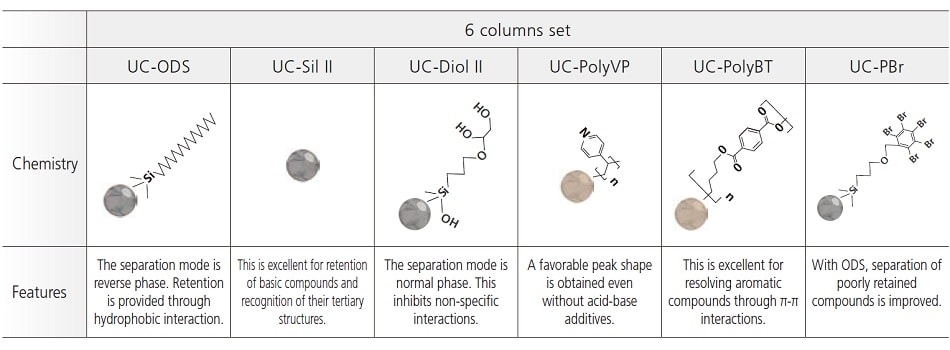
UC-Diol and UC-Diol II columns offer excellent general applicability for analyzing a wide variety of compounds, from phospholipids and other lipids to highly polar peptide compounds. However, a column with an ODS group stationary phase, such as the Shim-pack UC-ODS and Shim-pack UC-GIS II, must be used to separate phospholipids by molecular species with similar modifier parameters.
-
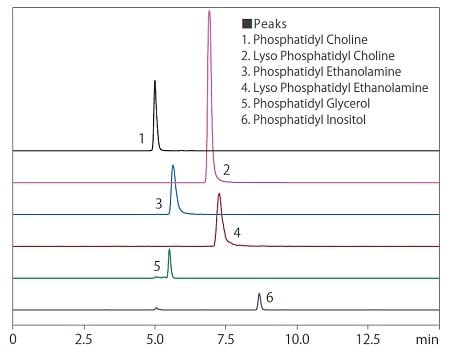
Analysis of Phospholipids
-
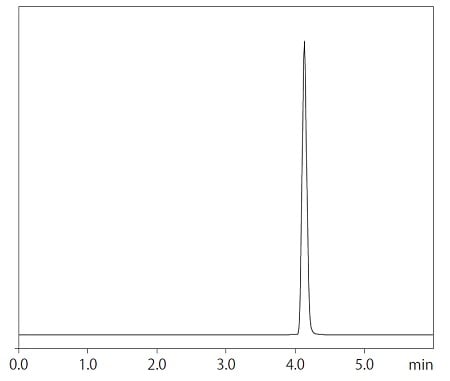
Analysis of peptides (Cyclosporin A)(UC-Diol/UC-Diol Ⅱ)
That means it may be possible to separate isomers and other compounds by SFC that are difficult to separate by HPLC. Columns with specific or multiple interaction modes may help improve separation. UC-PolyBT, with its high planar recognition capacity, and UC-PBr, with its dispersion power with Br, are useful.
-
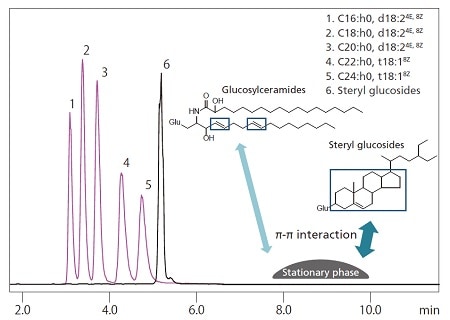
Analysis of Glucosylceramides and Steryl glucosides (UC-PolyBT)
-
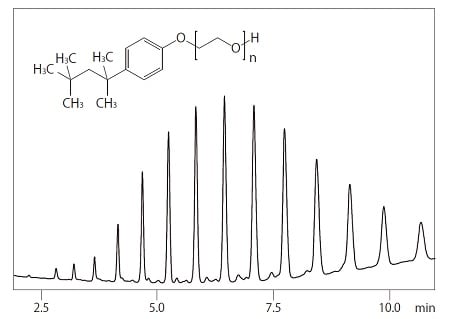
Analysis of Triton X-100 (UC-PBr)
Improved peak shapes result from suppression of the ionization of target compounds and the masking of solid phase secondary functional groups through the addition of acids, such as formic acids, and bases, such as amines. In contrast, during fractionation, it may be preferable not to use additive agents depending on the intended use of the fraction. With UC-PolyVP, in which poly(4-vinylpyridine) is bound to a silica gel carrier, good peak shape can be obtained even without the addition of acids or bases.When analyzing β blockers, which are basic compounds, sharp peaks are obtained even without the addition of salts. It is believed that poly(4-vinylpyridine), which is bonded to the polar silica gel surface, contributes to reducing interactions between the residual silanols and basic compounds.
-
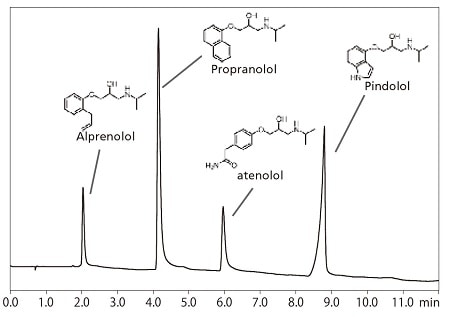
Analysis of Basic β Blockers (UC-PolyVP)
-
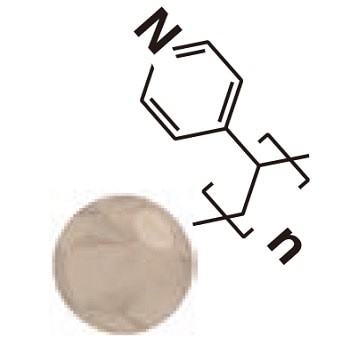
Shim-pack UC-PolyVP (Poly(4-Vinylpyridine) group)
Analysis of a Wider Range of Low and High-Polarity Compounds
Different separation methods are generally used for fatty acids, which are typically analyzed by GC, and glycerides, which are typically analyzed by HPLC. However, because supercritical carbon dioxide has properties similar to hexane, SFC is well-suited for analyzing compounds with low polarity. UC-HyP columns can be used to simultaneously analyze everything from fatty acids to glycerides.
-
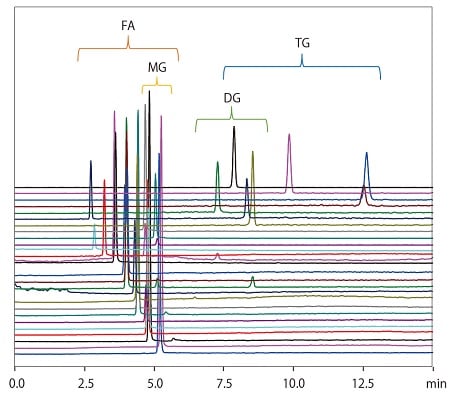
Simultaneous Analysis of Lipids(UC-HyP)
-
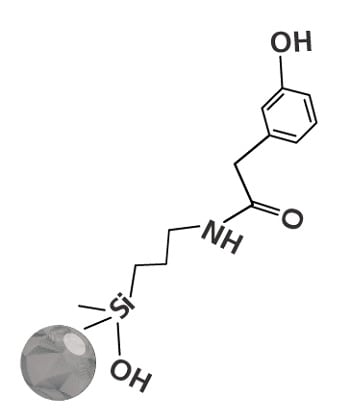
Shim-pack UC-HyP (3-Hydroxyphenyl group) )
Highly polar compounds, such as amino acids, can be analyzed by selecting an appropriate stationary phase and modier. By using a UC-Amide column, amino acids can be analyzed without the time and trouble of derivatization.
-
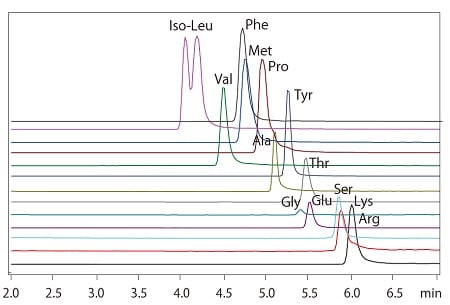
Simultaneous Analysis of Amino Acids(UC-Amide)
-
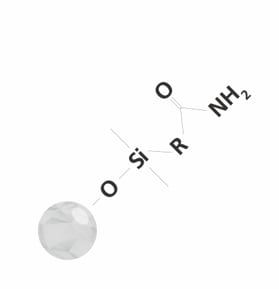
Shim-pack UC-Amide (Carbamoyl group)
Especially Useful for Separating Isomers and Other Compounds
PAHs contain multiple isomers, such as anthracene and phenanthrene, which cannot be separated with a mass spectrometer. Therefore, they must be separated by chromatography. All five isomer combinations can be separated using a UC-Choles column. The rigid stationary phase structure of the cholesteryl group is effective for resolving similar planar compounds.
-
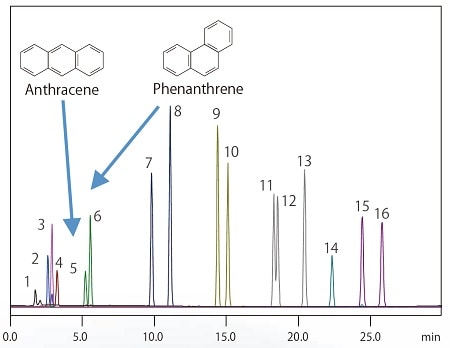
Simultaneous Analysis of Amino Acids(UC-Amide)
-
